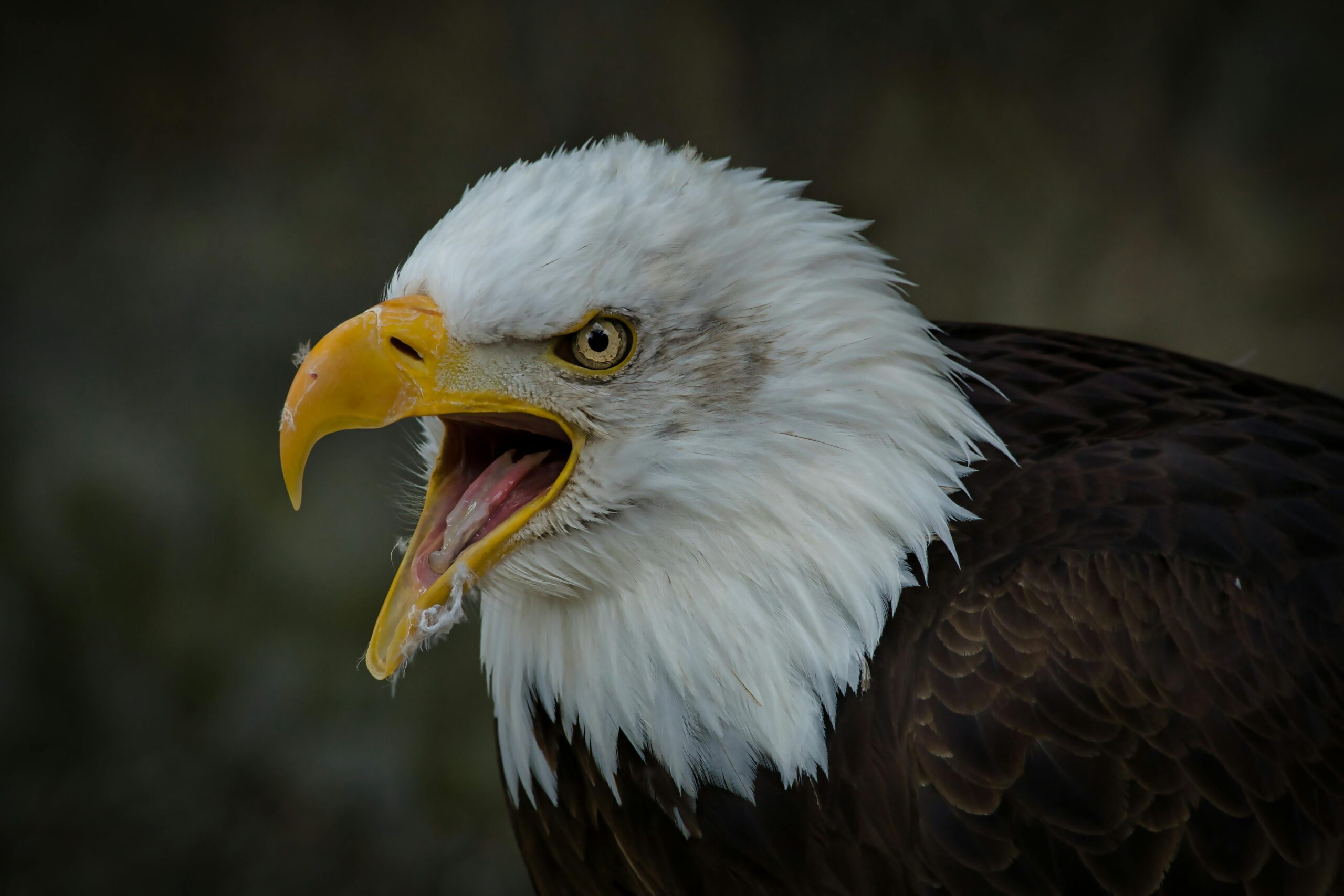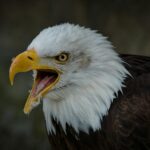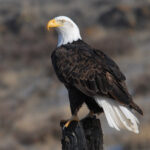Yes, there are bald eagles in Nova Scotia, particularly in Cape Breton around the larger lakes. The bald eagle population in Nova Scotia is significant because it remained relatively healthy and unaffected by DDT, which caused widespread decline in bald eagle populations in northeastern North America.
The Bald Eagle Population in Nova Scotia
The bald eagle is a large bird of prey with a wingspan of around two meters and a white head and tail, which it develops at the age of four. They primarily feed on fish but will also eat carrion and other birds. Nests are usually built in tall trees and can be very large, with the female laying 2 (rarely 3) eggs in mid-April.
According to Parks Canada, the bald eagle population in Cape Breton Highlands National Park is thriving, with the birds being spotted around the larger lakes in the park. The park’s website states that “the bald eagle is a common sight in the park, particularly around the larger lakes.”
The Shubenacadie Wildlife Park in Nova Scotia also has a bald eagle exhibit, where visitors can learn more about these majestic birds and their importance in the province’s ecosystem.
The Sheffield Mills Eagle Watch
 Image source: Pexels by Anrita Krause
Image source: Pexels by Anrita Krause
One of the best places to see bald eagles in Nova Scotia is the Sheffield Mills Eagle Watch, which takes place from late December to late March and attracts thousands of visitors each year. The event began in the 1980s when the bald eagle was an endangered species in Nova Scotia, and farmers were asked to throw out their dead chickens to help the juvenile eagles survive the winter.
Today, the event is a significant economic spinoff for the area and attracts amateur photographers and birdwatchers from all over. According to a CBC News report, the event “draws birds and tourists to tiny Nova Scotia community.”
The Sheffield Mills Eagle Watch is a great opportunity to see bald eagles up close and support the local community. Visitors can expect to see dozens of bald eagles feeding on the dead chickens provided by local farmers, as well as other wildlife such as hawks and owls.
The Importance of Bald Eagles in Nova Scotia
The bald eagle population in Nova Scotia is significant because it remained relatively healthy and unaffected by DDT, which caused widespread decline in bald eagle populations in northeastern North America. In fact, some Nova Scotian bald eagles were sent to the United States to help re-establish populations in New Jersey and Massachusetts in the 1980s.
Bald eagles are an important part of Nova Scotia’s ecosystem, as they play a crucial role in controlling the population of other birds and small mammals. They are also a symbol of national pride and are often used in various cultural and educational programs.
Conclusion
In summary, there are bald eagles in Nova Scotia, particularly in Cape Breton around the larger lakes. The bald eagle population in Nova Scotia is significant because it remained relatively healthy and unaffected by DDT, which caused widespread decline in bald eagle populations in northeastern North America. The Sheffield Mills Eagle Watch is a great opportunity to see these majestic birds up close and support the local community.
References:
– Parks Canada. (2022-11-19). Bald eagle – Cape Breton Highlands National Park. Retrieved from https://parks.canada.ca/pn-np/ns/cbreton/decouvrir-discover/faune-animals/oiseaux-birds/pygargue-eagle
– CBC. (2020-01-23). Eagle watch draws birds and tourists to tiny Nova Scotia community. Retrieved from https://www.cbc.ca/news/canada/nova-scotia/eagle-watch-sheffield-mills-1.5437273
– Shubenacadie Wildlife Park. (n.d.). Bald Eagle. Retrieved from https://wildlifepark.novascotia.ca/animals/bald-eagle.asp



